Greta Garbo
 From Nwe
From Nwe
| Greta Garbo | |
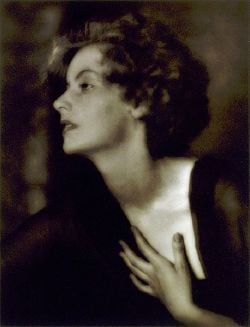 Greta Garbo in 1925 (photo by Arnold Genthe) |
|
| Birth name: | Greta Lovisa Gustafsson |
|---|---|
| Date of birth: | September 18, 1905 |
| Birth location: | |
| Date of death: | April 15, 1990 (84) |
| Death location: | |
| Academy Awards: | Best Actress Nominated: 1930 Romance 1930 Anna Christie 1938 Camille 1940 Ninotchka Lifetime Achievement Award (1955) |
Greta Garbo (September 18, 1905 – April 15, 1990), born Greta Lovisa Gustafsson, was a Swedish-born actress who was prominent during Hollywood's silent film period and part of its Golden Age. She was one of the few actors or actresses of the silent film era to make a successful transition to the "talkies," in which she also excelled.
Garbo is regarded as one of the greatest and most inscrutable movie stars ever produced by Metro-Goldwyn-Mayer and the Hollywood studio system. She was known for her intensely private life, strict performing schedule, and extravagant demands, which included closing sets even to the directors. Garbo had more control than any actor in Hollywood, and when she abruptly quit acting at the height of her career, she became more desired than ever. Garbo grew up in a poor, humble household in Stockholm and in the end beat the odds as a slightly overweight foreign teenager to become the most sought out actress of the day and a legend in Hollywood.
Early life
Greta Garbo was born Greta Lovisa Gustafsson in Stockholm, Sweden, the youngest of three children born to Karl Alfred Gustafsson and Anna Lovisa Johansson.
Greta yearned to be on stage as early as seven years old, when she would gaze at the actors going into Stockholm's Southside Theater, dressed in their costumes and make-up. When she was 14 years old, her father, with whom she was extremely close, became ill, and it was Greta who took him to the clinic. He was the only one who would listen to her dreams of becoming an actress. Unfortunately, in 1919, her father died of kidney failure, and Greta was forced to leave school and delay pursuing her acting goals in order to work full time as a lather girl in a barbershop.
She then became a clerk at the department store PUB, where she would also model for newspaper advertisements. She also appeared in a group of short film advertisements for the store, and these were eventually seen by comedy director Eric Petscher. Greta also went out of her way to wait on him when he came in to the store. After reading him a poem, she was cast in his next film, which ultimately led her to quitting her job at PUB. Soon, she was cast in a major part for his upcoming film, Peter The Tramp, in 1922.
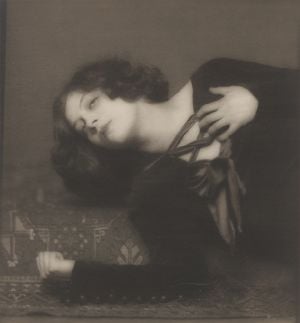
Seeing her potential, Petscher persuaded her to apply to the Royal Dramatic Theater in Stockholm, where she studied from 1922 to 1924. While she was there, she met director Mauritz Stiller, who cast her in a major role in the silent film Gösta Berlings Saga, in 1924, a dramatization of the famous novel by Nobel laureate Selma Lagerlöf. She starred opposite Swedish film actor Lars Hanson, and then starred in two more movies in Sweden and one in Germany (Die Freudlose Gasse—The Joyless Street). To be successful in the world of acting, Stiller told her to lose 20 pounds, and then changed her name at first to Mona Gabor, but eventually settled on the stage name of Greta Garbo.
She and Stiller were brought to Metro-Goldwyn-Mayer by Louis B. Mayer when Gösta Berlings Saga caught his attention. On viewing the film, Mayer was impressed with Stiller's direction, but was much more taken with Garbo's acting and screen presence. Garbo was signed on the spot with Stiller, and made her first visit to the United States on July 6, 1925. According to Mayer's daughter, Irene, with whom he screened the film, it was the look and emotions that emanated from Garbo's eyes that would make her a star. When they got to New York City, Garbo and Stiller were wined and dined for two months waiting on word from Mayer. Garbo, meanwhile, was reportedly homesick and wanted to go home. Mayer then increased her salary from $100 to $400, with a clause that her mother give permission. Mayer apparently had not previously realized that Garbo was under-age, and this was reason for the two month delay in New York City. Upon accepting his offer, she moved to Hollywood on September 10, 1925.
Life in Hollywood
Garbo's first film in Hollywood, The Torrent, was a box office success. She played opposite Ricardo Cortez and was hailed as a brilliant actress. With such great reviews, she was cast immediately in The Temptress, which was directed by Stiller and also starred Antonio Moreno. Unfortunately disputes between Stiller and Moreno held up production, and Stiller was eventually replaced by Fred Niblo.
Her next film, Flesh and Devil, starred Garbo with the American heart-throb John Gilbert. At the time of this film, Garbo had to face depression caused by learning that her sister, Alva, had died from cancer at the age of 23. Gilbert helped her overcome her emotional challenges, and also helped her with her technique and attitude.
Having achieved enormous success as a silent movie star, Garbo was one of the few actors who successfully made the transition to talkies, although she delayed the shift for as long as possible. Her film The Kiss (1929), was the last film MGM made without dialog (it used a soundtrack with music and sound effects only).
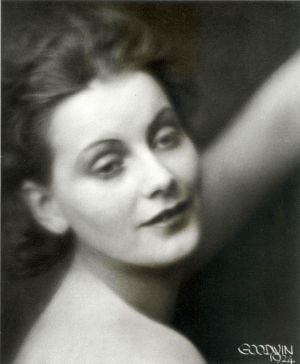
Garbo's low, husky voice and Swedish accent were first heard on screen in Eugene O'Neill's Anna Christie (1930), which was publicized with the slogan "Garbo Talks." The movie was a huge success, but Garbo hated her performance. Nevertheless, Garbo received her first two nominations for an Academy Award for Best Actress that year, for both Anna Christie and Romance, her next film made in the same year. In 1931, Garbo shot a German version of Anna Christie, which she considered one of her best performances on screen.
During this time, Garbo developed a reputation for being rather eccentric. If she was not pleased with something on the set, she would reportedly threaten: "I think I'll go back to Sweden!" The studio then conceded to Garbo's requirements for working conditions. She was known for demanding that the set be closed to all visitors. She became famous for even having MGM executives and actors ejected from sets. She allowed no one who was not directly involved in the immediate production work to watch as her scenes were shot, and demanded that black curtains surround her during the filming of close-ups.[1]
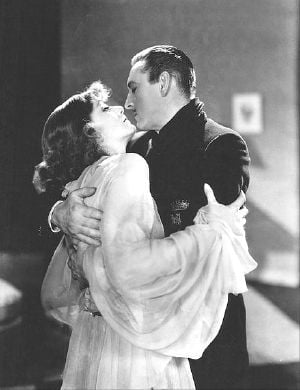
Garbo appeared particularly seductive as the famous World War I spy in the title role of Mata Hari (1931), and film censors complained about a revealing outfit shown on the movie poster. She was next part of an all-star cast in Grand Hotel (1932), which won the Academy Award for Best Picture and featured Garbo as a moody Russian ballerina.
Following this success, Garbo engaged in a contract dispute with MGM and did not appear on the screen for almost two years. When her new contract was finally signed, it granted her almost total control over her films. In her next movie, Queen Christina (1933), she replaced her leading man, Laurence Olivier, with John Gilbert. In 1935, David O. Selznick wanted her cast as the dying heiress in Dark Victory, scheduled to be filmed with Bette Davis in 1939, at Warner Brothers. Garbo insisted on being cast instead in a new version of Tolstoy's classic, Anna Karenina (Garbo had made a silent version of Anna Karenina, entitled Love, in 1927).
Her performance as the doomed courtesan in Camille (1936), directed by George Cukor, was called by the critics the finest performance she had ever recorded on film. She subsequently starred opposite Melvyn Douglas in the comedy Ninotchka (1939), directed by Ernst Lubitsch, which was one of her personal favorites.
Over her career, Garbo received praise from many fellow actors as well as reviewers. "Her instinct, her mastery over the machine, was pure witchcraft. I cannot analyze this woman's acting. I only know that no one else so effectively worked in front of a camera," Bette Davis remarked.
Later career
Ninotchka succeeded in lightening Garbo's image and making her seem less exotic.
In a follow-up film, Two-Faced Woman (1941), MGM attempted to capitalize on this by casting Garbo in a romantic comedy. Here, she would play a double role that also featured her dancing and cast her into "an ordinary girl." Directed by George Cukor, this was a critical failure. Although it did well at the box office, the negative reviews caused Garbo to end her acting career prematurely.
In 1941, MGM costume-designer Adrian also left the studio, later saying:
It was because of Garbo that I left MGM. In her last picture they wanted to make her a sweater girl, a real American type. I said, "When the glamor ends for Garbo, it also ends for me. She has created a type. If you destroy that illusion, you destroy her." When Garbo walked out of the studio, glamor went with her, and so did I.
After several years of inactivity, in 1949, Garbo considered reentering the movie business to shoot La Duchess de Langeais, directed by Walter Wanger. The plans for this film collapsed when financing failed to materialize and the screen tests were lost for 40 years. They were included in the 2005 Turner Classic Movies documentary Garbo, and show her still radiant at age 43.[2] There were suggestions that she might appear as the "Duchess de Guermantes" in a film adaptation of Marcel Proust's In Search of Lost Time, but this never came to fruition. She was offered many roles over the years, but always turned them down.
Her last interview appears to have been with the celebrated entertainment writer Paul Callan of the London Daily Mail, during the Cannes Film Festival. Meeting at the Hotel du Cap Eden Roc, Callan began "I wonder…," before Garbo cut in with "Why wonder?" and stalked off, making it one of the shortest interviews ever published. The newspaper gave the interview a double page spread.
Garbo gradually withdrew from the entertainment world completely and moved to a secluded life in New York City, refusing to make any public appearances.
Personal life
It has been suggested that Garbo remained single in the United States because of an unrequited love for her drama school sweetheart, the Swedish actress Mimi Pollak. Garbo's personal letters recently released to the public indicate that she remained in love with Pollak for the rest of her life. When Pollak announced she was pregnant, Garbo wrote, "We cannot help our nature, as God has created it. But I have always thought you and I belonged together."[3]
Her most famous heterosexual relationship was with actor John Gilbert. They starred together for the first time in the classic Flesh and the Devil, in 1926. Their on-screen chemistry soon translated into an off-camera romance. Gilbert asked her to marry him several times, but she always refused him. In 1927 Gilbert arranged their wedding, but she failed to show up at the ceremony.[4][5] After their relationship ended, Garbo showed great loyalty to Gilbert when his career collapsed with the coming of sound films, and insisted that he appear with her in 1933's Queen Christina.
Garbo felt her movies had their proper place in history and would increase in value. On February 9, 1951, she became a naturalized citizen of the United States. In 1953, she bought an apartment in Manhattan, New York City, where she lived for the rest of her life. She was known for taking long walks through the New York streets, always avoiding prying eyes, the paparazzi, and media attention. Garbo lived the last years of her life in absolute seclusion. She had invested very wisely, was known for extreme frugality, and was a very wealthy woman.
Toward the end of her life, she formed a relationship with George Schlee, who at the time was married to the fashion designer Valentina.
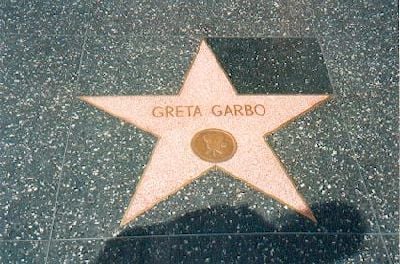
She died in New York on April 15, 1990, at the age of 84, as a result of end stage renal disease (ESRD) and pneumonia, and was cremated. She had previously been operated on and treated for breast cancer, which she overcame. She left her entire estate to her niece, Gray Reisfeld, and nothing to the elderly female companion, Claire, with whom she had lived for many years. Her ashes are buried at the Skogskyrkogården Cemetery in Stockholm, Sweden.
For her contributions to cinema, she has a star on the Hollywood Walk of Fame at 6901 Hollywood Boulevard. In addition, in 2005, the U.S. Postal Service and Sweden Post jointly issued two commemorative postage stamps bearing her likeness.[6]
Legacy
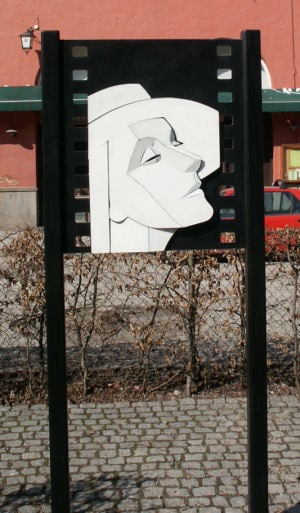
Greta Garbo was the ultimate Hollywood icon. As MGM's highest paid star, she was in twenty-five films with many Hollywood legends, such as Clark Gable, John Gilbert, John Barrymore, and Joan Crawford. She was known for her charisma, dedication to the films, and her intense desire to be private and mysterious. For over fifteen years, Garbo had approval of every part of her films, from the story all the way to the directors, co-stars, and cinematographers. This was a power unmatched by anybody in the history of the business and it often made her difficult to work with. More importantly, it intensified her career. Many people have tried to analyze her career and the inner workings of Garbo, while she spent her entire life trying to separate the actress Garbo from the real Garbo.
Despite Garbo's attempts to step away from the limelight, Time Magazine voted her Best Silent Actress of the Century (her compatriot Ingrid Bergman winning the Best Sound Actress) in 1950,[7] Garbo was also designated as the most beautiful woman who ever lived by the Guinness Book of World Records. In 1954, she was awarded a special honorary Academy Award for her unforgettable screen performances.
Filmography
| Year | Title | Role | Other notes |
|---|---|---|---|
| 1920 | Mr and Mrs. Stockholm Go Shopping | elder sister | Swedish: Herrskapet Stockholm ute på inköp |
| 1921 | A Happy Knight | Maid | Swedish: En lyckoriddare The film is lost |
| 1922 | Peter the Tramp | Greta | Swedish: Luffar-Petter |
| A Scarlet Angel | Extra | Swedish: Kärlekens ögon uncredited | |
| 1924 | The Story of Gösta Berling | Elizabeth Dohna | Swedish: Gösta Berlings saga |
| 1925 | The Joyless Street | Greta Rumfort | German: Die freudlose Gasse |
| 1926 | Flesh and the Devil | Felicitas | |
| The Temptress | Elena | ||
| The Torrent | Leonora Moreno aka La Brunna | ||
| 1927 | Love | Anna Karenina | |
| 1928 | A Woman of Affairs | Diana Merrick Furness | |
| The Mysterious Lady | Tania Fedorova | ||
| The Divine Woman | Marianne | Only a 9 minute reel steel exists. Source The Mysterious Lady DVD. | |
| 1929 | The Kiss | Irene Guarry | |
| The Single Standard | Arden Stuart Hewlett | ||
| Wild Orchids | Lillie Sterling | ||
| 1930 | Romance | Madame Rita Cavallini | Academy Award nomination - Best Actress |
| Anna Christie | Anna Christie | Academy Award nomination - Best Actress | |
| 1931 | Mata Hari | Mata Hari | |
| Susan Lenox (Her Fall and Rise) | Susan Lenox | ||
| Anna Christie | Anna Christie | German version | |
| Inspiration | Yvonne Valbret | ||
| 1932 | As You Desire Me | Zara aka Marie | |
| Grand Hotel | Grusinskaya | ||
| 1933 | Queen Christina | Queen Christina | |
| 1934 | The Painted Veil | Katrin Koerber Fane | |
| 1935 | Anna Karenina | Anna Karenina | New York Film Critics Circle Award - Best Actress |
| 1936 | Camille | Marguerite Gautier | Academy Award nomination - Best Actress |
| 1937 | Conquest | Countess Marie Walewska | |
| 1939 | Ninotchka | Nina Ivanovna 'Ninotchka' Yakushova | Academy Award nomination - Best Actress |
| 1941 | Two-Faced Woman | Karin Borg Blake |
Notes
- ↑ Greta Garbo: Biography Turner Classic Movies. Retrieved July 18, 2022.
- ↑ Garbo IMDb. Retrieved July 18, 2022.
- ↑ Alex Duval Smith, Lonely Garbo's love secret is exposed The Observer, September 10, 2005. Retrieved July 18, 2022.
- ↑ John Gilbert Garbo Forever. Retrieved July 18, 2022.
- ↑ Golden Silents, Greta Garbo (1905-1990) Retrieved July 18, 2022.
- ↑ 2005 Postage Stamps United States Postal Service. Retrieved July 18, 2022.
- ↑ Cinema: Best of the Half-Century TIME, March 06, 1950. Retrieved July 18, 2022.
References
ISBN links support NWE through referral fees
- Broman, Sven. Conversations with Greta Garbo. New York, NY: Vikings, 1992. ISBN 067084277X
- Paris, Barry. Garbo. New York, NY: Alfred A. Knopf, 1995. ISBN 0283999543
- Swenson, Karen. Greta Garbo: A Life Apart. New York, NY: Scribner, 1997. ISBN 0684807254
- Vickers, Hugo. Loving Garbo: The Story of Greta Garbo, Cecil Beaton, and Mercedes de Acosta. New York, NY:Random House, 1994. ISBN 978-0679413011
- Vieira, Mark. Greta Garbo: Cinematic Legacy. New York, NY: Harry N. Abrams, 2005. ISBN 081095897X
External links
All links retrieved July 18, 2022.
- Greta Garbo Turner Classic Movies
- Garbo Forever. garboforever.com.
- Greta Garbo IMDb
- Greta Garbo official website
Credits
New World Encyclopedia writers and editors rewrote and completed the Wikipedia article in accordance with New World Encyclopedia standards. This article abides by terms of the Creative Commons CC-by-sa 3.0 License (CC-by-sa), which may be used and disseminated with proper attribution. Credit is due under the terms of this license that can reference both the New World Encyclopedia contributors and the selfless volunteer contributors of the Wikimedia Foundation. To cite this article click here for a list of acceptable citing formats.The history of earlier contributions by wikipedians is accessible to researchers here:
- Greta Garbo history
The history of this article since it was imported to New World Encyclopedia:
- History of "Greta Garbo"
Note: Some restrictions may apply to use of individual images which are separately licensed.
↧ Download as ZWI file | Last modified: 02/03/2023 20:44:50 | 7 views
☰ Source: https://www.newworldencyclopedia.org/entry/Greta_Garbo | License: CC BY-SA 3.0
 ZWI signed:
ZWI signed: KSF
KSF